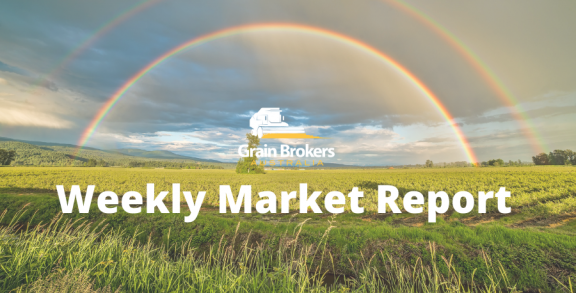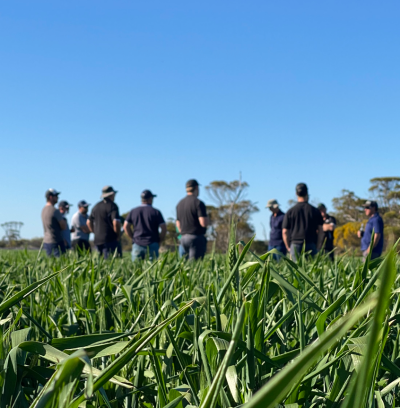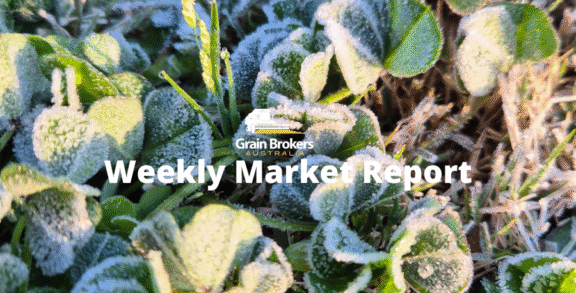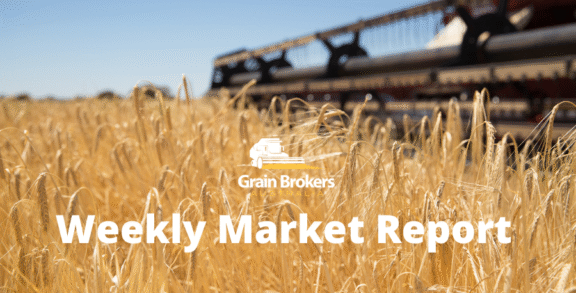
Late-season frosts were reported in fields across the southern wheat-growing regions of Argentina last week, according to the Buenos Aires Grain Exchange, dampening the 2025/26 production outlook, which was set to challenge the 2021/22 record.
The production impact of the cold temperatures, which swept through in the aftermath of an intense cold front last weekend, is still being assessed by farmers and agronomists, as is crop damage from the storms and extreme rainfall that accompanied the front.
The latest climate report from the exchange, released on October 16, reported that “although the general feeling is that the main climate risk affecting the current agricultural season will be excessive rainfall, it should be noted that, during the last few weeks, the cooling of the Equatorial Pacific has intensified considerably, both on its Asian margin and on its American margin, reaching a state very close to a weak La Niña”. A continued move in this direction is more likely to lead to a decrease in the intensity and frequency of rainfall in Argentina.
The exchange advised that the full impact of the frost event is unknown at this point in time, but wheat crops in the south are currently at a vulnerable growth stage. Nevertheless, the high soil moisture conditions and elevated ambient humidity may have helped reduce the impact of low temperatures, so it will be necessary to monitor crop evolution in the coming weeks to more accurately assess the true extent of the damage.
Consequently, the Buenos Aires Grain Exchange maintains its 2025/26 wheat production forecast of 22 million metric tonne off a harvested area of 6.7 million hectares, until any crop damage can be defined. This is up from 18.6MMT last season, off 6.3 million hectares, and puts this year’s output just 400,000 metric tonne shy of its record crop of 22.4MMT reaped in 2021/22. The average yield at the current production estimate is 3.28 metric tonne per hectare, compared to 2.95MT/ha last year and 3.45MT/ha in 2021/22.
However, early last month, the competing Rosario Grains Exchange raised its new crop production estimate to 23MMT, also off 6.7 million hectares for an average yield of 3.43MT/ha. The dramatic increase, from its early spring projection of 20MMT, is due to a highly favourable soil moisture profile following above-average winter and early spring rainfall in most agricultural regions. The forecast ties its own production record of 23MMT set four seasons ago. Industry consultants reportedly told the exchange that, “We’ve never seen the wheat look like this.”
The nation received unprecedented precipitation in July and August. Several records were reportedly set in the latter, with the rainfall total in the village of Gancedo in Chaco province the highest in 115 years of historical monthly rainfall records. Excessive falls early in the season also led to waterlogging at seeding time, with the final planted area reportedly reduced by around 400,000 hectares, more than half of which is in Buenos Aires province.
The final crop condition report from the Buenos Aires Grain Exchange was released on October 22, and it put the wheat crop at 88 per cent good-to-excellent, down slightly from 90 per cent a week earlier, but dramatically better than the same time last year, when the crop rating was just 38 per cent good-to-excellent. The fair-to-poor proportion remained at 3 per cent, unchanged week-on-week, but notably lower than the 38 per cent recorded a year earlier.
Soil moisture conditions on October 22 were reported to be 76 per cent optimal-to-adequate, up from 73 per cent seven days earlier and 64 per cent a year earlier. The proportion of the crop area with excessive moisture decreased from 12 per cent on October 15 to five per cent a week later, but remained higher than the two per cent logged at the same time in 2024.
The wet weather has also slowed early harvest progress, after headers started rolling in midway through last month. As of October 29, 8.4 per cent of the wheat area had been harvested, an advance of just 3.1 percentage points over the preceding seven days but still tracking fractionally ahead of the long-term average.
However, following the widespread rains that affected nearly the entire agricultural area, almost a quarter of wheat fields remain temporarily inaccessible, a condition expected to improve dramatically this week. The peak harvest month in Argentina is generally December, with wheat harvest in the far south not winding down until late January.
According to the Buenos Aires Grain Exchange, harvesters in the northern agricultural regions continue to report wheat yields above local expectations, resulting in a national average yield of 2.03MT/ha to date. Yields will improve as the harvest moves south with crops in Buenos Aires and La Pampa provinces expected to return well above 4.0MT/ha.
On the barley front, the Buenos Aires Grain Exchange is forecasting 2025/26 production of 5.3MMT from 1.3 million hectares, yielding an average of 4.08MT/ha. Output in 2024/25 was 5.0MMT off the same area, putting the average yield at 3.85MT/ha. Average production over the past five years was 4.72MT/ha from 1.22 million hectares, at 3.87MT/ha. Argentina’s barley harvest generally commences around mid-November and concludes in late January.
Call your local Grain Brokers Australia representative on 1300 946 544 to discuss your grain marketing needs.
Written by Peter McMeekin.





